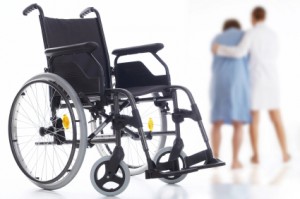For most working families, the number one asset isn’t their savings, it isn’t their retirement account balance, and it isn’t even their home. For most families, the most important single asset is the ability to earn an income.
Consider: For a 35 year old worker, with thirty more years in the work force, earning $50,000 per year. That is a future income worth $1.5 million to the family – and that’s assuming he never got another raise, and never got another bonus.
Most families have at least considered purchasing life insurance on the breadwinner. And disability insurance on the breadwinner is a hot topic of discussion for most smart families. But there’s another – often overlooked threat – and a threat that can be even more devastating to the family than the death of a breadwinner.
What if the non-earning spouse suddenly becomes totally disabled?
Case Study
Imagine a family of five: Harry works and earns $75,000 per year. Julie is . They have three children, ages 2,4 and 6. Julie stays at home, running the home and caring for the children, while Harry works, picking up overtime as he can. The family has a group medical plan through Harry’s employer. And in a heartbeat, Julie is rendered disabled and in a wheelchair – needing full-time care, once she comes home from the hospital.
Medical insurance will help with the hospital bills. But once she’s home, she can no longer perform the same duties she did. Harry will have to take time away from work caring for Julie – and the children. He may be able to do this for a while. But the bills have to be paid.
The family may have purchased long-term care insurance. That will help with much of the custodial care and in home care, depending on the richness of the policy.
But the bills still have to be paid.
When Harry returns to work, to keep a roof over the families’ heads, he must find and pay for child care for three children. And hire help around the house for the hundreds of small things that Julie did before the accident. And he must hire a health aid to help provide care for Julie. And somehow keep the money rolling in to pay for it all.
Disability income insurance on the breadwinner alone doesn’t address this family’s needs. On top of the personal tragedy, their financial outlook is now devastated.
Tell your clients and prospects: Of the three kinds of medical insurance you can buy – major medical, long term care and disability – two of them provide income and resources to somebody else. Only one of them – disability income insurance – pays you.
One Approach To Sales
Walk your clients through a similar scenario. “Bang! Julie’s in a wheelchair. Car wreck. Comes home totally disabled. What’s the plan?”
Then shut up.
Let your prospects fully game the financial consequences of a serious injury to either or both spouses. Sit down with an experienced adviser and wrestle with the following questions:
- What would it cost to provide care for the children if a stay at home spouse is disabled?
- What would it cost to provide care for the house?
- How long would each spouse want to be able to take off work in the wake of such a tragedy?
- How long can they afford to take off?
- Will they need an immediate lump sum in the event of such a disability? To remodel the house, perhaps? Or pay a large deductible for a health plan?
- Is their primary need ongoing income?
Solutions
Let your clients work through the solutions. They are more likely to acknowledge a problem they “discover” themselves, through discussion, than they are if you just assert that the problem is there. Have them work out a “plan.” Then say, “ok, where are the gaps?”
They’ll tell you.
And then say, “want to see what it costs to make the gaps go away?”
 AgenteNews Insurance Producer's Online Resource
AgenteNews Insurance Producer's Online Resource






